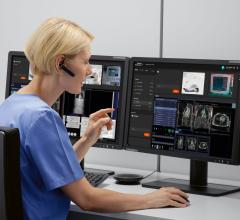January 25, 2017 — In work published this week in the Journal of Clinical Investigation (JCI), a team led by Jacob Hooker at Harvard Medical School assessed GV1-57, a radiotracer that specifically binds to mature olfactory sensory neurons, as an approach for quantifying neuronal populations with positron emission tomography (PET) imaging.
Olfactory neurons in the nasal cavity are the primary source of our sense of smell. Unlike many types of neurons, olfactory neurons are continuously generated throughout the adult lifespan. This uniquely high rate of neuronal birth and death makes olfactory neurons particularly sensitive to the detrimental effects of progressive neurodevelopmental and neurodegenerative disease. In Alzheimer's disease and Parkinson's disease, loss of the sense of smell often precedes classical symptoms of cognitive or motor dysfunction. Therefore, a technique that is able to non-invasively quantify the olfactory neuron population could provide important insights related to the diagnosis and progression of neurodevelopmental and neurodegenerative diseases.
Using GV1-57, researchers were able to detect neuron generation during rodent postnatal development as well as neuron degeneration in rodent models of aging and neurodegenerative disease. In an additional proof-of-concept experiment, they showed that GV1-57 maintained saturable binding in non-human primate nasal cavity, suggesting that this radiotracer may be useful for evaluating neurological disease in clinical settings.
For more information: www.jci.org
Van de Bittner, G.C., Riley, M.M., Cao, L., Ehses, J., et al. "Nasal neuron PET imaging quantifies neuron generation and degeneration," The Journal of Clinical Invesigation. Published Jan. 23, 2017. doi:10.1172/JCI89162


 April 10, 2024
April 10, 2024 






![(A) PET images of [68Ga]Ga-DOTA-ZCAM241 uptake at baseline and 3, 7, and 12 days after injection as inflammatory arthritis developed in single representative individual mouse. Images are normalized to SUV of 0.5 for direct comparison between time points. (B) CD69 immunofluorescence Sytox (Thermo Fisher Scientific) staining of joints of representative animals during matching time points.](/sites/default/files/styles/feed_medium/public/PET%20Tracers.jpeg?itok=P5Di6MIe)

